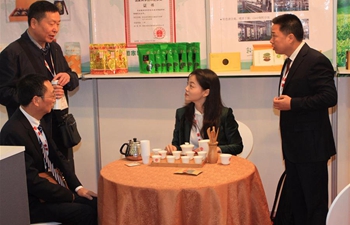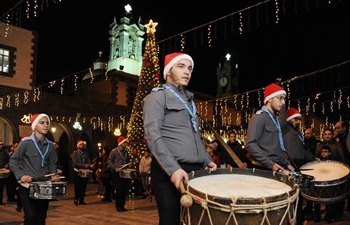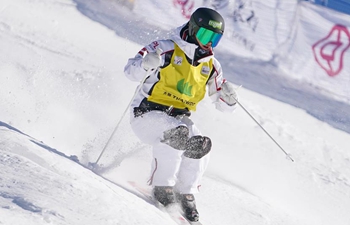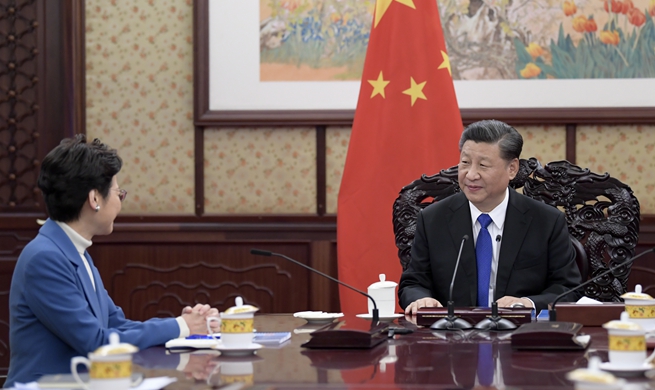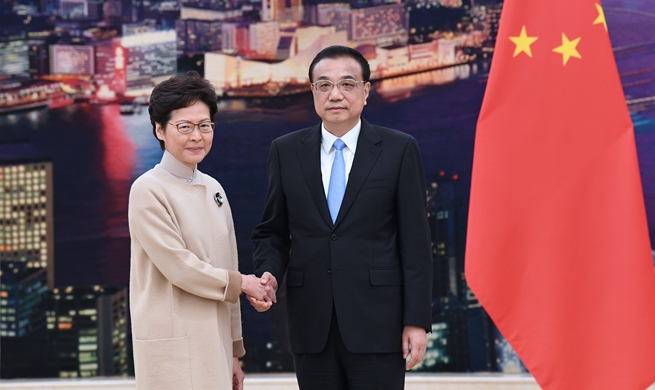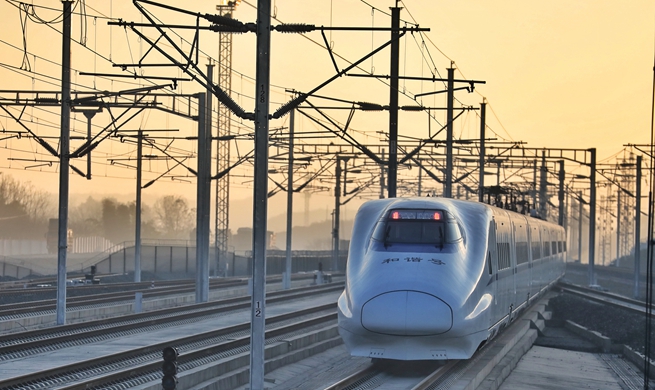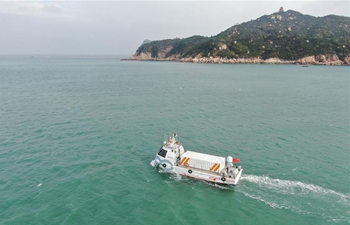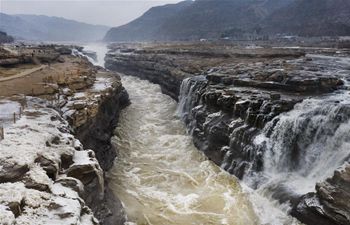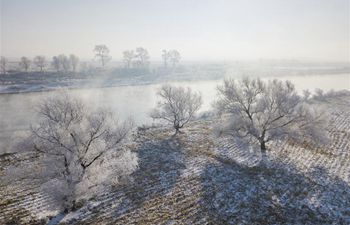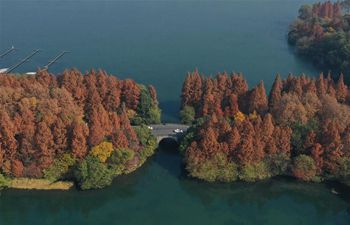BEIJING, Dec. 17 (Xinhua) -- The recently-completed Shougang big air jump had its first test ahead of the 2022 Beijing Winter Olympic Games with the permanent big air facility hosting the 2019 Air & Style Beijing FIS World Cup in the Chinese capital.
Previously an old steel factory, the Shougang Industrial Park is now being transformed into the headquarters of the Beijing 2022 organizing committee, as well as the competition venue for the big air events.
Beijing 2022 organizers say they are committed to delivering a "fantastic, extraordinary and excellent" Olympic and Paralympic Winter Games, as the focus of preparations for the Games has shifted from venue construction to the management and operation of competition centers.
Also this month, at China's National Aquatics Center, where Michael Phelps claimed record eight gold medals in Beijing 2008, the 2019 China Junior Curling Open was held, as the venue's nickname changes from Water Cube to Ice Cube.
After a year of construction, the former Water Cube pool has been transformed into an Olympic-standard curling venue. The China Junior Curling Open was the first event held here, representing an important test for the venue's capability of hosting curling at Beijing 2022.
Beijing 2022's competition and non-competition venues are located in three competition clusters, namely downtown Beijing, Yanqing District and Zhangjiakou in neighboring Hebei Province. By next year, all competition venues are set to be completed.
In Yanqing competition zone, the racing track and supporting facilities of the National Alpine Skiing Center have been completed. An Alpine Skiing World Cup event will be held in February, serving as the first test event for Beijing 2022.
From February next year to the first half of 2021, a total of 20 test events, including 15 Winter Olympic events and five Paralympic events, will be held, most of which are world championship-standard.
In September, an animated giant panda named "Bing Dwen Dwen" and a red lantern baby called "Shuey Rhon Rhon" were unveiled as the mascots for the Olympic Winter Games and Paralympic Games respectively.
Volunteering also represents a crucial part of the Olympic movement. On the 34th International Volunteer Day (December 5), a global recruitment drive for volunteers to work at the Beijing Winter Olympics and Paralympics was officially launched. In just over four days, the number of applicants reached 463,000.
In 2020, slogans, medals and torch design plans will be collected, and the route of the torch relay and theme songs for the Games will also be released.
The high-speed railway linking Beijing, Yanqing and Zhangjiakou will open at the end of this year and will significantly shorten the travel time from the current three hours to 50 minutes.
In line with the 2020 Olympic Agenda, a key focus of Beijing 2022 is sustainability in areas such as waste management, energy efficiency and carbon management.
Natural carbon dioxide refrigeration systems will be used for the first time in Winter Olympic Games history at Beijing 2022, reducing the Games' overall carbon footprint.
This system will be used at the Beijing 2022 speed skating, figure skating and short track venues, as well as the ice hockey training venues.
The IOC described it as a "landmark decision", signifying a reduction of carbon emissions equal to the yearly footprint of almost 3,900 cars. A similar carbon reduction could also be achieved by planting more than 1,200,000 trees.




